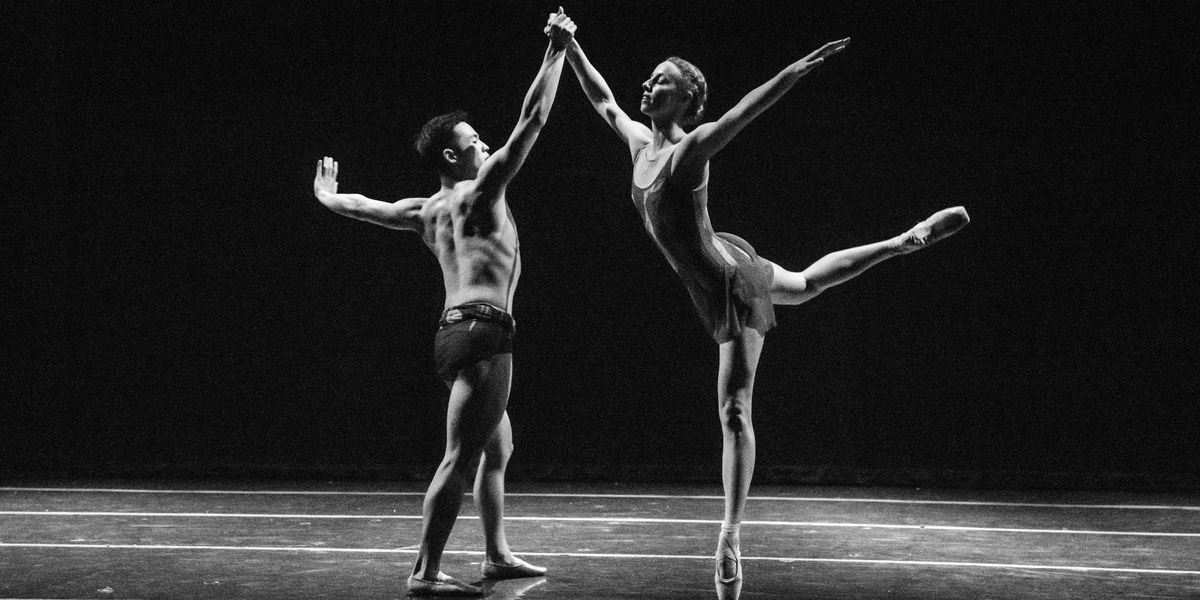Sharing, Supporting, Empowering: Why Partnering Feels More Poignant Than Ever
I know many male dancers who prefer dancing solo: In a classical pas de deux, they simply “get through” the adagio section until they can showcase themselves in the virtuoso male variation. But for me, my fondest performing memories usually involve partnering. Perhaps it’s related to my struggles with male ballet steps (double tour en l’air, anyone?). While I do enjoy dancing by myself, there is something special about sharing the stage with someone else.
My first time partnering came when I was training pre-professionally in Vancouver, and I was chosen to perform the central pas de deux in a piece by Wen Wei Wang, set to the Bach cello suites by Yo-Yo Ma. I vividly remember being thrown into these rehearsals head-first, and I quickly realized how much responsibility I had in negotiating a variety of tasks simultaneously: physically supporting my partner, knowing her steps and also anticipating her next steps to make the transitions smooth and seamless. I was fortunate to have a very understanding (and more experienced) partner.
I also came to realize how satisfying it was to work on things with someone else. So much of the mental effort that dance requires happens inside your head, and it was refreshing to have a space to articulate problems out loud and collaborate on them with someone else.
The performance was an out-of-body experience I will never forget. Perhaps it was the combination of all my work as a novice partner coming to fruition with the incredible duo of Bach music and Yo-Yo Ma, but for a couple of minutes nothing existed or even mattered besides me, my partner and the music. It was such a complete departure from reality that after we bowed and left the stage, all we could manage to do was stare at each other in complete silence.
As I gained more experience, partnering became not just a cathartic outlet for me as a performer, but also a way to empower my female colleagues. In a recent interview between Phil Chan, co-founder of Final Bow for Yellowface, and Megan Fairchild, a principal dancer with New York City Ballet, Chan brought up how every person is a combination of different forms of privilege (e.g., male privilege, tall privilege, white privilege, etc.) and how the best thing anyone can do with these advantages is to help those with less.
This made me think about partnering. It’s common knowledge that it’s much harder in the ballet world as a female dancer than as a male dancer. In addition to being required to conquer the technical demands of pointework, the competition between women is fiercer, and they are far more likely to be subject to the crushing experiences of body and weight shaming. So as a male partner, I see it as my job to disappear behind them so that all the deserved attention of the audience falls on their dancing.

Author Daniel Cho with Lieneke Matte in Richard Dickinson’s Mowgli’s Jungle Adventures
Jackie Sajewski, Courtesy Cho
I am not writing this from the perspective of a self-proclaimed master in the art of partnering. Different challenges come with the different people I partner, and figuring out how to work with someone is not always a smooth experience.
Earlier this year, I had to tell a partner that she was asking so much of me that it was impairing my ability to do my job. In my efforts to be a “good partner,” I’d been agreeing to all her requests even when I didn’t feel comfortable. It reached a point where I felt dread and anxiety before rehearsals. We had an honest dialogue in which she shared that her actions were motivated by a genuine desire to improve, but she graciously understood my perspective. We did our best to find a compromise on how to work together, paving the way for future communication.
In a time as tumultuous as today, so much is overwhelming. I still grapple with feelings of despondency about how dancers are deemed “nonessential.” Since returning to rehearsals and performances (with masks and strict sanitation), partnering has offered a new perspective on how I can contribute as an artist: by helping and supporting those around me. This experience feels even more poignant in the midst of a pandemic. Through partnering, I hope not only to uplift my female partners, but also to inspire audience members to empower others around them.




